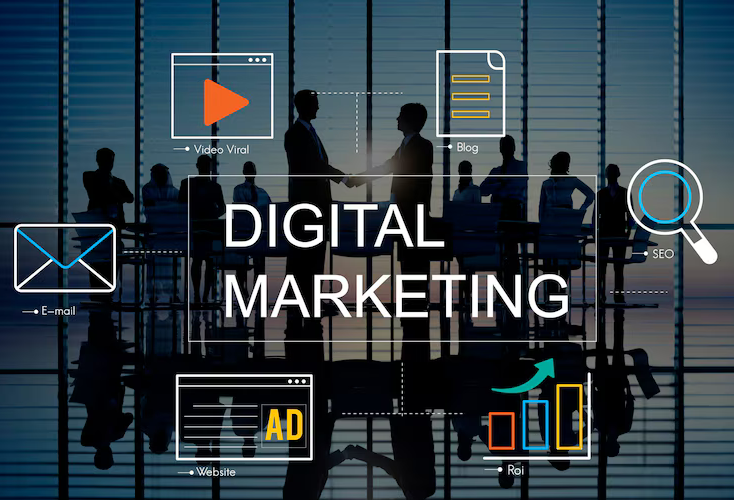In today’s hyper-competitive digital world, it’s no longer enough to push advertisements and hope for the best. Instead, successful marketers strive to understand the customer journey — the complete experience a customer has with a brand, from initial awareness to post-purchase loyalty. This deep understanding allows businesses to meet their audience at every stage with the right message, at the right time, through the right channel — ultimately leading to higher conversions.
Let’s explore how understanding the customer journey can help you optimize conversions and strengthen your digital marketing strategy.
What Is the Customer Journey?
The customer journey refers to the entire process a consumer goes through when interacting with a business. This includes every touchpoint — from the first time they become aware of your brand, through the research and decision-making phases, and even beyond the purchase.
It’s typically broken down into several stages:
- Awareness – The customer discovers your brand or product.
- Consideration – The customer evaluates your offerings and compares them with competitors.
- Decision – The customer decides to make a purchase.
- Retention – You work to keep the customer engaged post-purchase.
- Advocacy – A satisfied customer becomes a loyal advocate who promotes your brand.
Each of these stages presents a unique opportunity to influence the customer and guide them toward conversion.
Why Mapping the Customer Journey Matters
Many businesses fail to convert leads into customers simply because they don’t fully understand how potential buyers behave. Without a clear map of the journey, it’s easy to deliver irrelevant messages, lose prospects at key moments, or miss chances for engagement.
Here’s how journey mapping helps improve marketing outcomes:
- Personalization: By identifying customer needs at each stage, you can tailor content, messaging, and offers that resonate.
- Better Timing: You’ll know when to deliver certain types of content (e.g., educational blog posts vs. promotional discounts).
- Resource Allocation: Understand which touchpoints drive the most conversions, allowing better budgeting and campaign focus.
- Customer Experience Optimization: You can identify pain points or friction in the journey and fix them to smooth the path to conversion.
Key Strategies to Understand the Customer Journey
Collect and Analyze Data
Start by gathering data from various sources such as website analytics, CRM systems, email marketing platforms, social media, and customer service interactions. Look for:
- Traffic sources
- Time on site
- Bounce rates
- Conversion paths
- Abandoned cart behavior
- Support ticket topics
Analyzing this data helps you spot trends and behaviors that indicate where users are in their journey — and what’s causing them to convert or drop off.
Create Detailed Buyer Personas
Understanding your audience is foundational. Develop personas that reflect your ideal customers, including:
- Demographics
- Motivations
- Pain points
- Buying behavior
- Preferred channels
These personas should be dynamic and based on real data, not just assumptions. When you can see your journey through the eyes of your customers, you can design a more effective path for them.
Map the Journey Touchpoints
Lay out all the touchpoints your customers interact with — website pages, social media, paid ads, email campaigns, in-store visits, etc. Then map them to the stages of the customer journey.
Ask yourself:
- What questions is the customer asking at this stage?
- What content would be most helpful?
- What is the best call-to-action?
A well-mapped journey highlights content gaps and conversion blockers that need to be addressed.
Segment and Automate Communications
Not all customers are at the same stage. Use segmentation to divide your audience based on their behaviors or demographics. Then, implement marketing automation to send relevant content or offers automatically.
For example:
- Send educational blog content to top-of-funnel leads.
- Offer case studies or demos to middle-of-funnel prospects.
- Trigger follow-ups or discounts to re-engage cart abandoners.
Segmentation and automation ensure the right message reaches the right customer at the right time.
How to Optimize Conversions at Each Stage
Awareness Stage
- Use SEO, social media, and paid ads to increase brand visibility.
- Offer blog content, videos, or webinars to educate and attract.
Consideration Stage
- Deliver comparison guides, testimonials, and detailed product content.
- Retarget with ads and email drip campaigns.
Decision Stage
- Present special offers, free trials, or demos to reduce friction.
- Optimize landing pages and checkout experiences.
Retention Stage
- Follow up with post-purchase emails, loyalty programs, and satisfaction surveys.
- Provide excellent customer support.
Advocacy Stage
- Encourage reviews, referrals, and social sharing.
- Feature loyal customers in case studies or user-generated content.
The Role of Analytics and Feedback Loops
To continuously optimize, you must measure performance and adapt. Key metrics to monitor include:
- Conversion rates at each stage
- Customer lifetime value (CLTV)
- Net Promoter Score (NPS)
- Churn rates
- Funnel drop-off points
Use A/B testing to refine headlines, CTAs, and page layouts. Regularly collect feedback via surveys or chatbots to uncover real-time insights.
Final Thoughts
Understanding the customer journey isn’t a one-time exercise — it’s an ongoing process that should evolve with your audience and the market. By deeply analyzing how customers interact with your brand at each stage, you can create targeted, relevant experiences that not only convert but build loyalty.
If you want to gain the skills to do this effectively, consider taking steps to Master Digital Marketing. With the right knowledge, tools, and strategies, you’ll be equipped to drive meaningful results across every stage of the customer journey.








